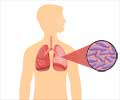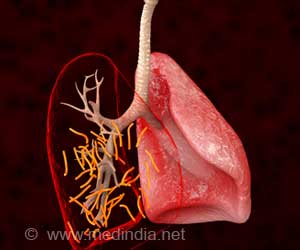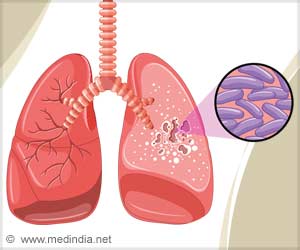Promising experimental cancer chemotherapy drugs may help knock out another life-threatening disease: tuberculosis (TB).

‘Promising experimental cancer chemotherapy drugs may help knock out another life-threatening disease: tuberculosis (TB).’





When Dr. Arnett's team treated M.tb-infected macrophages with Mcl-1 inhibitors that target this important apoptotic pathway, they found a reduction of M.tb growth by 80%. Almost 20 people develop TB and four people die from the disease every minute, somewhere in the world. TB is now the world's deadliest single infectious disease, surpassing AIDS.
"If we can stimulate apoptosis in M.tb-infected cells, then we can reduce M.tb growth, Dr. Arnett explained. "Induction of apoptosis and subsequent reduced M.tb growth should ultimately result in less inflammation and damage to the lungs, and increased control of TB."
Tuberculosis infection also creates granulomas in the lungs - dense cellular structures that are the body's attempt to wall off an infection it is unable to eliminate. However, granulomas also provide a niche for the bacterium to become recalcitrant to antibiotics, Dr. Arnett's study showed that these experimental cancer drugs also reduced M.tb growth in granulomas using a human granuloma model holding promise for the activity of these drugs in human and animal models.
Cancer drugs similar to those used in the study are already in Phase II of Food and Drug Administration clinical trials. The next step for testing on the TB front will be to find out the effectiveness of this therapy in a mouse model, and then finally, in a nonhuman primate before moving on to human trials.
Advertisement
This study is a great example of why basic scientific research is so important," said senior investigator of the study Dr. Larry Schlesinger, the President & CEO of Texas Biomed. "When we study important host cell pathways for disease, we can find relationships we didn't even know existed. We can forge new ways to use current knowledge to create novel strategies for host-directed therapy for infection to be used along with antibiotics."
Advertisement















